The Role of Comparative Negligence in New York Personal Injury Cases
When pursuing a personal injury claim in New York, understanding the concept of comparative negligence is crucial. Comparative negligence directly impacts how much compensation you may recover if you are considered to be partially at fault for the accident. At Rusk, Wadlin, Heppner & Martuscello, LLP, we help Hudson Valley accident victims deal with New York’s complex personal injury laws, including issues of comparative negligence. Contact us today for advice and representation from a skilled and experienced Kingston personal injury lawyer.
What Is Comparative Negligence?
Comparative negligence is a legal doctrine used to determine liability and damages in personal injury cases where multiple parties share responsibility for an accident. Under this system, a plaintiff’s compensation is reduced by their percentage of fault in causing the accident. For instance, if you are 20% at fault for an accident, your recovery will be reduced by 20%.
In most states, your ability to pursue a claim can be barred if your share of responsibility is equal to or greater than that of the other party. New York, in contrast, follows a “pure comparative negligence” rule, meaning you can recover compensation even if you are primarily at fault for the accident. However, your percentage of fault will proportionally reduce your damages.
How Does Comparative Negligence Apply in New York Personal Injury Cases?
Comparative negligence often arises in various personal injury scenarios. For example:
- Car Accidents: If both drivers share responsibility for a crash, their respective fault percentages will determine the amount each can recover. For example, if one driver was speeding and the other failed to yield, both might share liability.
- Slip and Fall Accidents: If you trip on a poorly maintained sidewalk but were distracted by your phone, a court may assign you partial fault.
- Workplace Injuries: While workers’ compensation typically covers job-related injuries regardless of fault, third-party claims against non-employers (e.g., equipment manufacturers) may involve comparative negligence.
Proving Fault in a Comparative Negligence Case
Negligence and comparative fault are legal issues, but the facts in any situation govern how the law is applied. Determining fault and comparative involves presenting evidence as to liability, which can be gleaned from sources such as police reports, eyewitness accounts, photographs or surveillance footage, and expert testimony (e.g., accident reconstruction specialists).
Insurance companies often argue that the injured party bears more responsibility to minimize their payout. Having an experienced attorney is essential to counter these tactics and ensure a fair assessment of fault by compiling and presenting a compelling case proving the other party’s fault.
The allocation of fault significantly affects the outcome of your case. Consider a scenario where you are injured in an accident caused by another’s negligence, and your damages are determined to be $100,000. If you are found 25% at fault, your recovery is reduced by $25,000, leaving you with only $75,000. Accurately determining fault is therefore vital to maximizing your compensation. An experienced attorney will advocate for a fair allocation of responsibility, ensuring you are not unfairly burdened with more than your share of fault.
While New York’s pure comparative negligence rule allows accident victims to recover damages even if they are mostly at fault, it also creates additional challenges to your case. Defendants and their insurers may aggressively argue that you bear significant fault as a negotiation strategy or courtroom tactic to reduce their liability. In addition, cases involving multiple parties require thorough investigation and strategic negotiation to resolve disputes over fault allocation.
How Rusk, Wadlin, Heppner & Martuscello, LLP, Can Help
At Rusk, Wadlin, Heppner & Martuscello, LLP, our attorneys understand the nuances of New York’s comparative negligence laws and their impact on personal injury cases. We provide comprehensive representation to investigate the accident and gather critical evidence, counter allegations of contributory fault, negotiate with insurance companies for a fair settlement, and advocate for you in court, if necessary.
Our firm has a long history (over 150 years!) of helping Hudson Valley residents secure the compensation they deserve after an injury. We are dedicated to protecting your rights and ensuring fault is allocated fairly.
Contact Our Kingston Personal Injury Attorneys Today
If you’ve been injured in an accident in the Hudson Valley, you need an attorney who understands New York’s comparative negligence laws and their impact on your case. Contact Rusk, Wadlin, Heppner & Martuscello, LLP, today for a free consultation. Call 845-331-4100 in Kingston, 845-236-4411 in Marlboro, or 800-566-4101 toll-free throughout the Hudson Valley, and let us help you pursue your personal injury claim and fight for the compensation you deserve.

